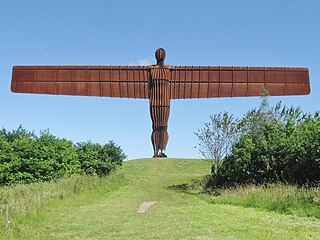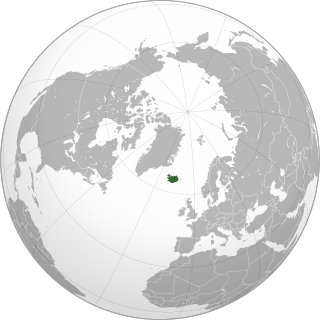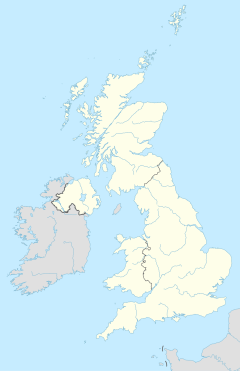Premium-rate telephone numbers are telephone numbers that charge callers higher price rates for select services, including information and entertainment. A portion of the call fees is paid to the service provider, allowing premium calls to be an additional source of revenue for businesses. Tech support, psychic hotlines, and adult chat lines are among the most popular kinds of premium-rate phone services. Other services include directory enquiries, weather forecasts, competitions and ratings televoting. Some businesses, e.g. low-cost airlines, and diplomatic missions, such as the US Embassy in London or the UK Embassy in Washington, have also used premium-rate phone numbers for calls from the general public.
A telephone numbering plan is a type of numbering scheme used in telecommunication to assign telephone numbers to subscriber telephones or other telephony endpoints. Telephone numbers are the addresses of participants in a telephone network, reachable by a system of destination code routing. Telephone numbering plans are defined in each of the administrative regions of the public switched telephone network (PSTN) and in private telephone networks.

The Metropolitan Borough of Gateshead is a metropolitan borough in the metropolitan county of Tyne and Wear, England. It includes Gateshead, Rowlands Gill, Whickham, Blaydon, Ryton, Felling, Birtley, Pelaw, Dunston and Low Fell. The borough forms part of the Tyneside conurbation, centred on Newcastle upon Tyne. At the 2021 census, the borough had a population of 196,154.

In the United Kingdom, telephone numbers are administered by the Office of Communications (Ofcom). For this purpose, Ofcom established a telephone numbering plan, known as the National Telephone Numbering Plan, which is the system for assigning telephone numbers to subscriber stations.

The Australian telephone numbering plan governs the allocation of telephone numbers in Australia. It has changed many times, the most recent major reorganisation by the Australian Communications and Media Authority taking place between 1994 and 1998.

South Africa switched to a closed numbering system effective 16 January 2007. At that time, it became mandatory to dial the full 10-digit telephone number, including the zero in the three-digit area code, for local calls. Area codes within the system are generally organized geographically. All telephone numbers are 9 digits long, except for certain Telkom special services. When dialed from another country, the "0" is omitted and replaced with the appropriate international access code and the country code +27.
The Big Number Change addressed various issues with the telephone dialling plan in the United Kingdom, during the late 1990s and early 2000s, when the country was running short of new telephone numbers.
Widespread UK telephone code misconceptions, in particular brought on by the Big Number Change in 2000, have been reported by regulator Ofcom since publication of a report it commissioned in 2004.

020 is the national dialling code for London in the United Kingdom. All subscriber numbers within the area code consist of eight digits and it has capacity for approaching 100 million telephone numbers. The code is used at 170 telephone exchanges in and around Greater London as part of the largest linked numbering scheme in the United Kingdom. In common with all other British area codes the initial '0' is a trunk prefix that is not required when dialling London from abroad.

Telephone numbers in Malaysia are regulated by the Malaysian Communications and Multimedia Commission (MCMC).

The format of telephone numbers in Australia has changed over time to allow for the expansion of the subscriber base as technology has improved.

PhONEday was a change to telephone numbering in the United Kingdom on Sunday 16 April 1995. A shortage of unique telephone numbers in the old dialling system meant that it was becoming increasingly difficult in certain areas of the country to assign unique numbers to new subscribers. To counteract this, dialling codes starting with 0 were changed to start with 01. In Bristol, Leeds, Leicester, Nottingham and Sheffield, the existing area codes, which were 5 digits in length, were instead entirely replaced with new codes comprising 4 digits, to increase the amount of possible numbers by a factor of ten. The changes made possible the ability to provision new numbers in each of these five cities. It also had the effect of assigning all geographic landline telephone numbers into one range of numbers starting with 01, allowing for further changes to be made at the Big Number Change in 2000. A £16m advertising campaign, and an eight-month parallel period during which both old and new codes were active, preceded the change. PhONEday followed a change made in May 1990, when the old London area code 01 was released from use, permitting all United Kingdom geographic numbers to begin with this prefix. Originally planned in 1991 to take place in 1994, in 1992 the change was postponed until the Easter Sunday bank holiday in 1995.

Telephone numbers in Iceland are seven digits long and generally written in the form xxx xxxx or xxx-xxxx and the E.123 format specifies +354 xxx xxxx from abroad since the country code is +354.
National conventions for writing telephone numbers vary by country. The International Telecommunication Union (ITU) publishes a recommendation entitled Notation for national and international telephone numbers, e-mail addresses and Web addresses. Recommendation E.123 specifies the format of telephone numbers assigned to telephones and similar communication endpoints in national telephone numbering plans.
0114 is the national dialling code for Sheffield in the United Kingdom. The area it serves includes almost all of the City of Sheffield and some adjacent areas. When STD codes were first introduced, Sheffield was assigned the mnemonic 0SH2, later changing to the corresponding numbers upon the introduction of All-Figure Dialling in the area. Instead of the expected 01742 code, Sheffield's area code changed to the current 0114 code on 16 April 1995, along with 4 other cities in England, as part of PhONEday. All subscriber numbers within the area code consist of seven digits. The code is used at several telephone exchanges as part of a linked numbering scheme. In common with all other British area codes the initial '0' is a trunk prefix that is not required when dialling Sheffield from abroad.
Ranges for fictitious telephone numbers are common in most telephone numbering plans. One of the main reasons these ranges exist is to avoid accidentally using real phone numbers in movies and television programs because of viewers frequently calling the numbers used. In North America, the area served by the North American Numbering Plan (NANP) system of area codes, fictitious telephone numbers are usually of the form (XXX) 555-xxxx. The use of 555 numbers in fiction, however, led a desire to assign some of them in the real world, and some of them are no longer suitable for use in fiction. Other areas have different fictitious telephone numbers.
01708 is the national dialling code for Romford in the United Kingdom. The area it serves includes almost all of the London Borough of Havering and some adjacent areas. When STD codes were first introduced, Romford was assigned 0708 and 0402 was used for the rest of the current code area. After a sequence of changes in the early 1990s, culminating with PhONEday, the current 01708 code became active on 16 April 1995. All subscriber numbers within the area code consist of six digits. The code is used at eight telephone exchanges as part a linked numbering scheme. In common with all other British area codes the initial '0' is a trunk prefix that is not required when dialling Romford from abroad.
Telephone numbers in the United Kingdom have a flexible structure that reflects their historical demands, starting from many independent companies through a nationalised near-monopoly, to a system that supports many different services, including cellular phones, which were not envisaged when the system was first built. Numbers evolved in a piecemeal fashion, with numbers initially allocated on an exchange-by-exchange basis for calls connected by manual operators. Subscriber numbers reflected demand in each area, with single digit telephone numbers in very rural areas and longer numbers in cities.
The ceremonial county of Tyne and Wear was created under the Local Government Act 1972, which came into effect on 1 April 1974, comprising the urban areas around the mouths of the Rivers Tyne and Wear, previously parts of the historic counties of Northumberland and Durham. It returned 12 MPs to the UK Parliament from 2010 to 2024. Under the 2023 review of Westminster constituencies, coming into effect for the 2024 general election, the boundary commission proposed two cross-county boundary seats with Northumberland and one with Durham, in addition to 10 constituencies wholly within the county boundaries,.









